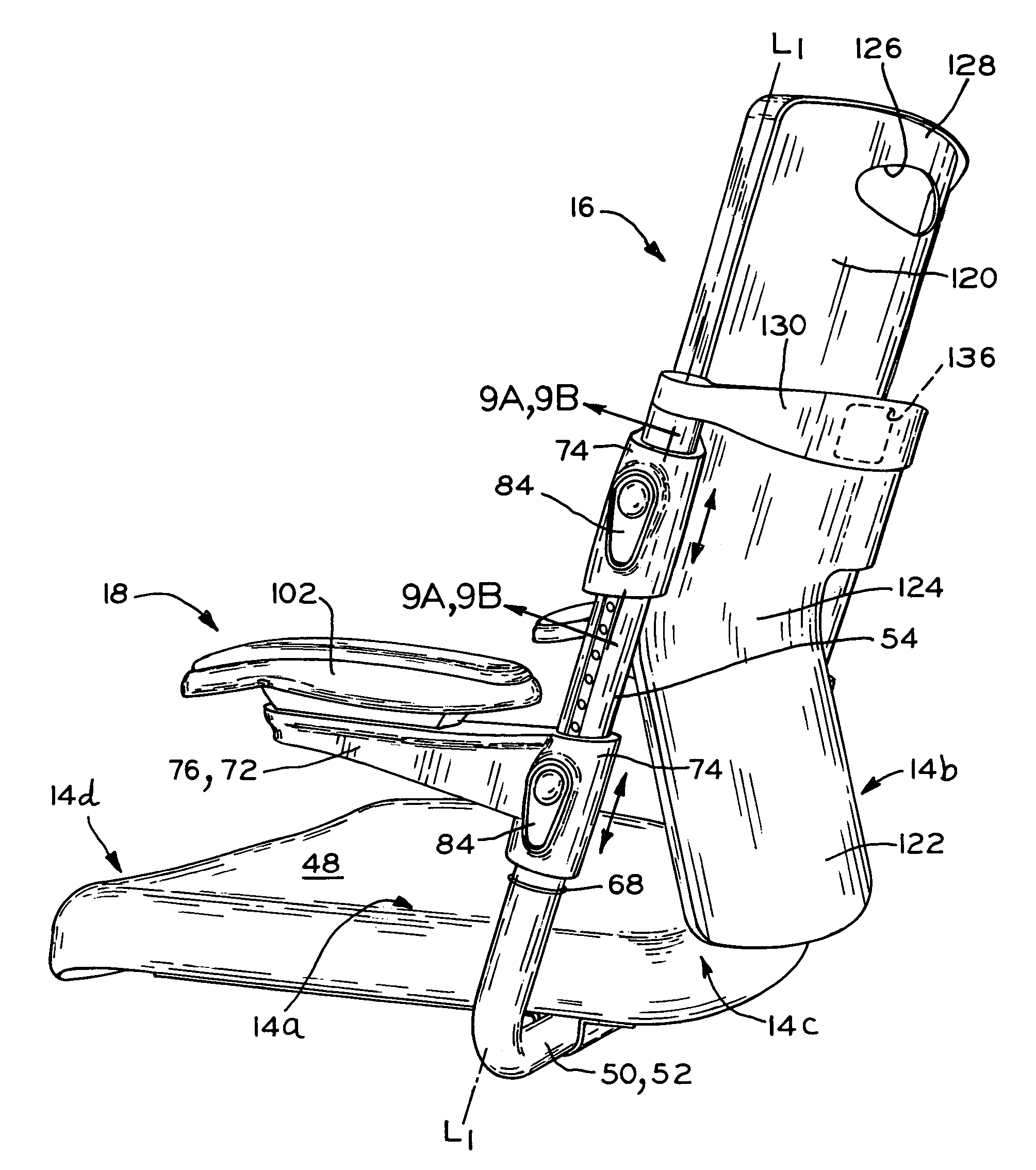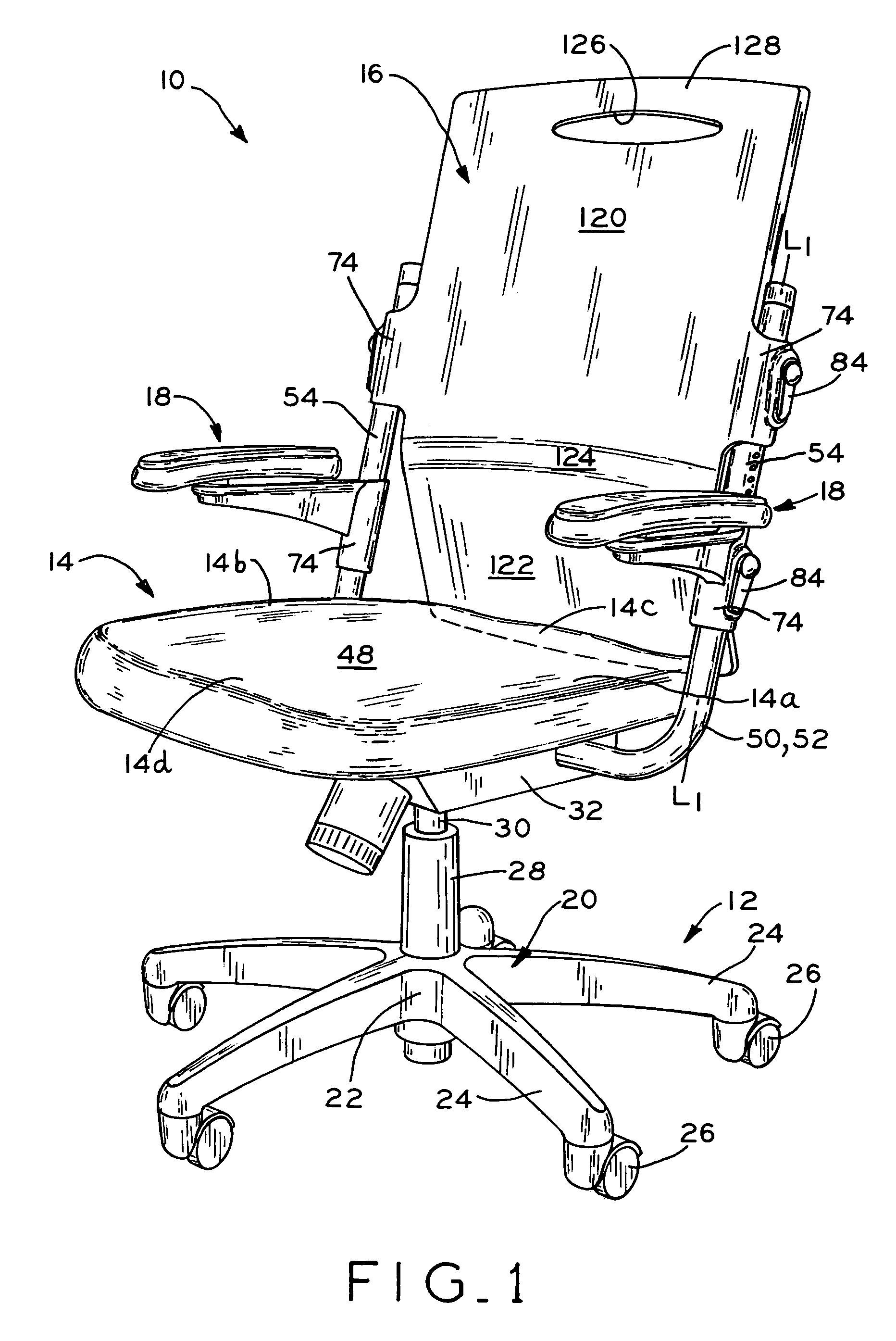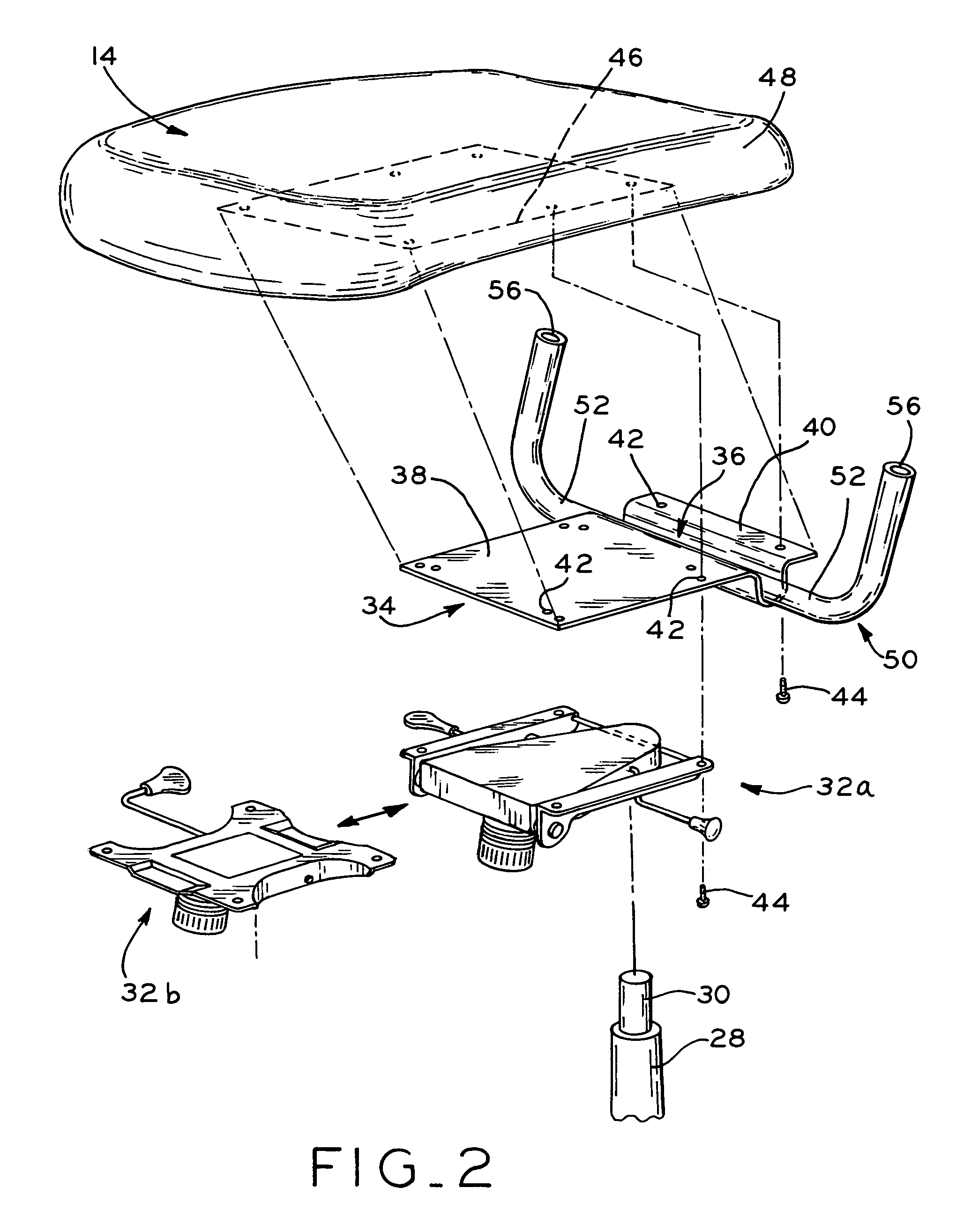Chair with adjustable armrests and backrest
a technology of adjustable armrests and backrests, which is applied in the field of chairs, can solve the problems of inconvenient operation, high manufacturing cost, and inability to adjust the backrest of many known task chairs, and achieve the effect of convenient operation
- Summary
- Abstract
- Description
- Claims
- Application Information
AI Technical Summary
Benefits of technology
Problems solved by technology
Method used
Image
Examples
Embodiment Construction
[0027]Referring to FIG. 1, task chair 10 is shown in accordance with the present invention. Task chair 10 generally includes base assembly 12, seat 14, backrest 16, and armrests 18, as discussed in further detail below. Base assembly 12 of chair 10 includes a “spider”-type base 20 including central hub 22 and a plurality of legs 24 extending radially therefrom. The terminal end of each leg 24 includes a caster wheel 26, allowing rolling movement of chair 10 along a floor surface. Alternatively, chair 10 may include a set of fixed, vertical chair legs. Received within central hub 22 of base 20 is a pneumatic cylinder assembly, including cylinder 28 mounted in central hub 22 and piston 30 slidably received within cylinder 28. Pneumatic cylinder assemblies for task chairs are known components which are available from many commercial sources, and generally provide vertical adjustment of the height of chair 10 with respect to base 20 and a floor surface. Piston 30 of the pneumatic cylind...
PUM
 Login to View More
Login to View More Abstract
Description
Claims
Application Information
 Login to View More
Login to View More - R&D
- Intellectual Property
- Life Sciences
- Materials
- Tech Scout
- Unparalleled Data Quality
- Higher Quality Content
- 60% Fewer Hallucinations
Browse by: Latest US Patents, China's latest patents, Technical Efficacy Thesaurus, Application Domain, Technology Topic, Popular Technical Reports.
© 2025 PatSnap. All rights reserved.Legal|Privacy policy|Modern Slavery Act Transparency Statement|Sitemap|About US| Contact US: help@patsnap.com



